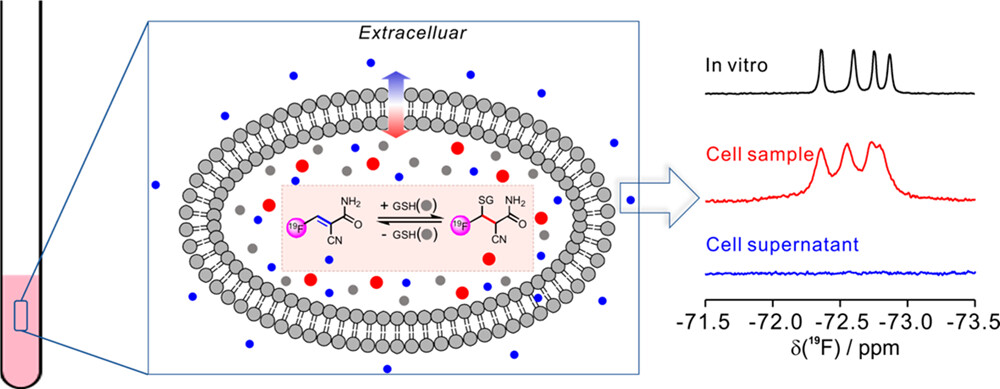Glutathione (GSH) is the most abundant nonprotein thiol in living organisms and has multiple important functions. GSH generally exists in two forms: reduced glutathione (GSH) and oxidized glutathione (GSSG). Under physiological conditions, the reduced GSH is the major form, with its concentration from 10 to 100-fold higher than the oxidized one. GSH is able to scavenge reactive oxygen and nitrogen species, thereby contributing to the control of redox homeostasis. The homeostasis of intracellular GSH is tightly controlled by intracellular enzymes, and the increased GSH level in tumor cells is often associated with increased resistance to cancer chemotherapeutic drugs. Real-time quantification of intracellular GSH is insightful for monitoring the variations of intracellular physiological conditions in relation to pathophysiological and metabolic processes. Most methods rely on the irreversible consumption of GSH to detect changes of the detecting probes either in spectral or imaging density, which are unable to monitor the real-time changes of GSH levels in live cells. This irreversible detection strategy introduces the assumption that GSH can be produced continuously from live cells, which shifts the homeostasis of intracellular GSH under basal conditions. NMR is a noninvasive method that can provide rich structural information at the atomic-level resolution of biomolecules and offer a wide range of time-scale dynamics for the biological molecules under physiological conditions. Especially, in-cell NMR has offered an opportunity to study the protein structure and dynamics in situ or in live cells. 19F-NMR has the advantage of high sensitivity, large range of chemical shift, and no-background interference of intracellular components, and is well suitable for biological assay. Inspired by the reversible detection of intracellular GSH by fluorescence probes proposed by the earlier reports, and 2D NMR assay of selectively isotope labeled GSH and protein samples in live cells.
Recently, Xun-Cheng Su’s group presented a sensitive 19F-NMR method to quantify real-time variations of GSH in live cells in a reversible manner. This NMR method prevents extracellular leakage and irreversible consumption of intracellular GSH during the detection. The high performance of the reactive 19F-probe enables accurate determination of intracellular GSH content at atomic resolution, from which information on GSH variations with respect to the extracellular and intracellular conditions can be inferred. In addition, we demonstrate the applicability of this NMR method to quantify the GSH levels between different live cell lines and to disclose the distinct differences between the intracellular environment and cell lysates. We foresee the application of 19F-NMR to monitor real-time variations of intracellular GSH levels in relation to GSH-involved central cellular processes. Relevant achievements were published in ACS Cent. Sci. 2023, DOI: 10.1021/acscentsci.3c00385.
